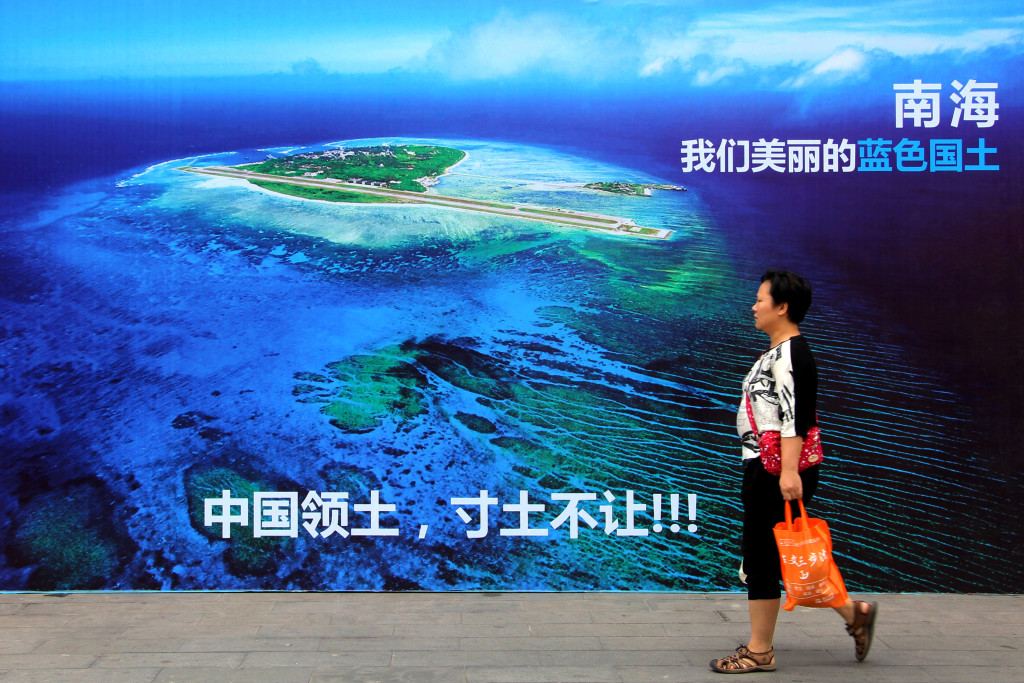
In this July 14, 2016 file photo, a woman walks past a billboard featuring Pagasa, a Philippine island in the South China Sea, on display with Chinese words that read: “South China Sea, our beautiful motherland, we won’t let go an inch” in Weifang in east China’s Shandong province. An international arbitration panel’s decision on the contested waters of the South China Sea so far is fueling regional tensions rather than tamping them down. In the ensuing 11 days, China has responded to the sweeping victory for the Philippines by flexing its military might. The Philippines faces pressure both at home and abroad not to cede an inch to China after the July 12 decision by a tribunal at The Hague-based Permanent Court of Arbitration. AP
VIENTIANE, Laos — Southeast Asia’s main grouping has opened a meeting of their foreign ministers, deeply divided on how to deal with China’s territorial expansion in the South China Sea.
Laos is hosting the gathering of the 10-nation Association of Southeast Asian Nations, which traditionally ends with a joint statement. But the sticking point is whether to include a reference to the South China Sea. ASEAN’s cardinal principle is decisions by consensus, which means any country can veto a proposal. This time again, it appears to be Cambodia, China’s close ally.
In welcoming remarks, Laotian Foreign Minister Saleumxay Kommasith made no mention of the dispute.
In 2012, Cambodia also blocked a mention of the dispute, which ended with the ministers failing to issue a statement for the first time in the bloc’s history./rga
RELATED STORY
Cambodia blocking Asean consensus on South China Sea—diplomat
SE Asia bloc pushes for South China Sea breakthrough